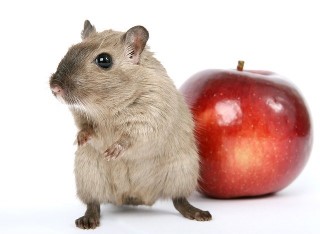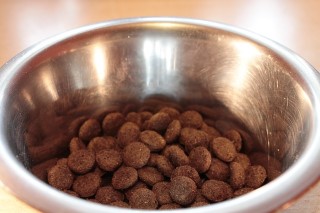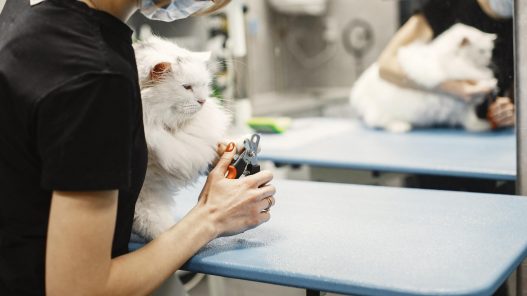
Our beloved pets bring joy, companionship, and warmth to our lives. Whether you share your home with a playful pup, a majestic feline, or another furry friend, keeping them clean and well-groomed is an essential part of responsible pet ownership. In this comprehensive guide, we will explore the world of pet grooming essentials, from choosing the right tools to setting up a grooming area, mastering the grooming process, and addressing special considerations for different breeds and species. By the end of this journey, you’ll be equipped with the knowledge and skills to ensure your fur baby is fresh, clean, and happy.
Choosing the Right Pet Grooming Tools
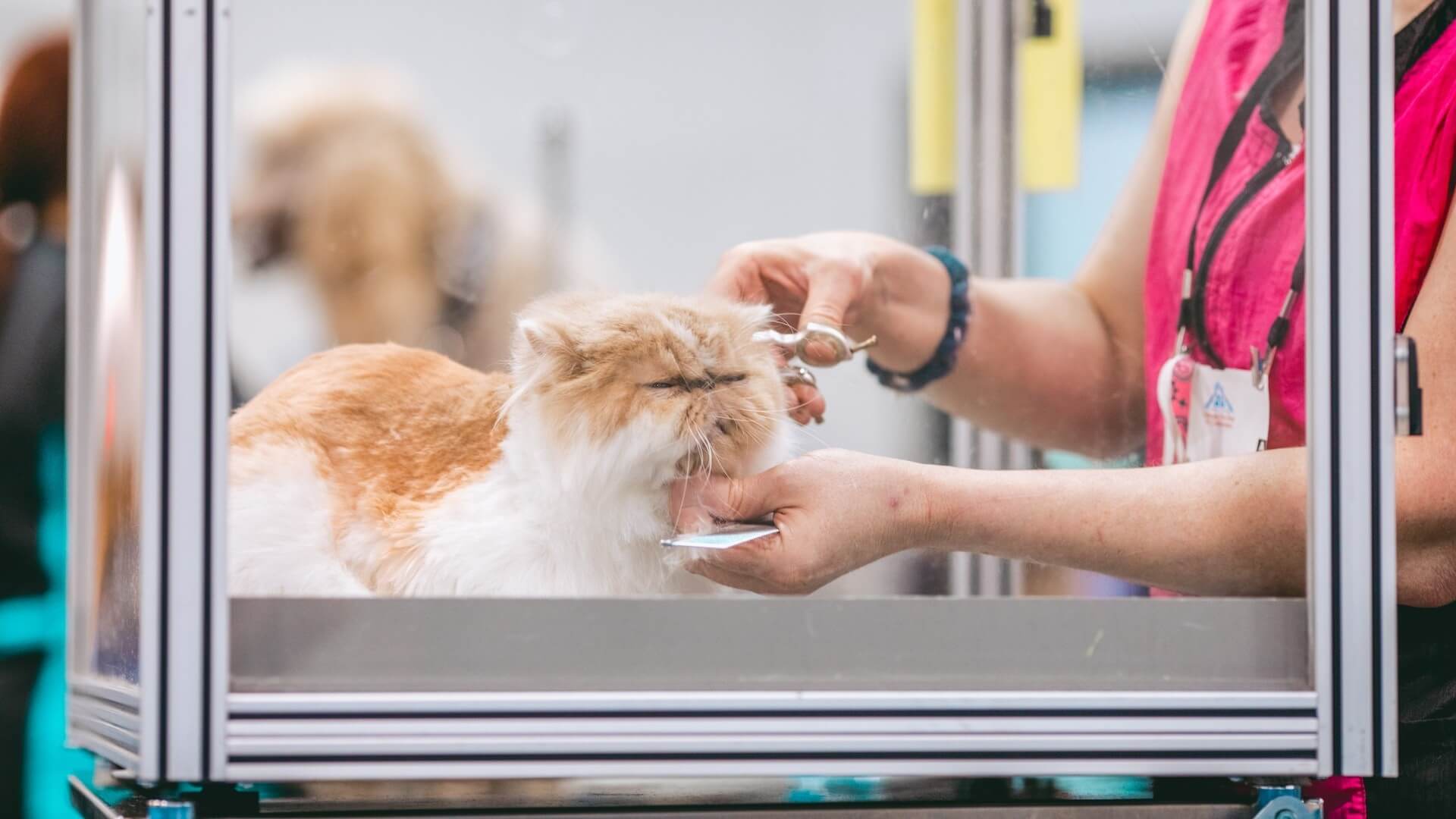
Grooming essentials begin with selecting the right tools to care for your pet’s coat and hygiene. Let’s delve into the key items you need:
- Brushes and Combs
The type of brush or comb you choose depends on your pet’s coat type. For long-haired breeds, a slicker brush can help remove tangles, while short-haired pets benefit from a bristle brush for a glossy finish. Additionally, consider a de-shedding tool for breeds that shed heavily. - Clippers and Trimmers
Clippers are essential for maintaining your pet’s fur length, especially for breeds with fast-growing hair. Trimmers, on the other hand, are ideal for precision work around sensitive areas like the face and paws. Cordless models provide more maneuverability. - Shampoos and Conditioners
Not all shampoos are created equal. Select a pet-specific shampoo that suits your pet’s skin type, whether it’s for dry skin, allergies, or general cleaning. Conditioners can help keep their coat soft and manageable. For pets with sensitive skin, hypoallergenic options are available. - Nail Clippers and Grinders
Regular nail maintenance is vital to prevent overgrowth and discomfort for your pet. Clippers and grinders come in various styles, so choose one that you find most comfortable to use. Look for models with safety features like nail guards to avoid cutting too deep. - Ear Cleaners and Wipes
Proper ear hygiene is crucial for preventing infections. Use specialized ear cleaners and wipes to keep your pet’s ears clean without causing harm. Pay attention to your pet’s ear shape, as some breeds are more prone to ear issues than others. - Toothbrushes and Dental Care Products
Dental health is often overlooked but is vital for your pet’s overall well-being. Invest in pet-specific toothbrushes and toothpaste to maintain their oral hygiene. Dental chews and toys can complement your efforts to keep their teeth clean.
Each tool plays a crucial role in keeping your pet’s appearance and health in top condition.
Setting Up a Grooming Area
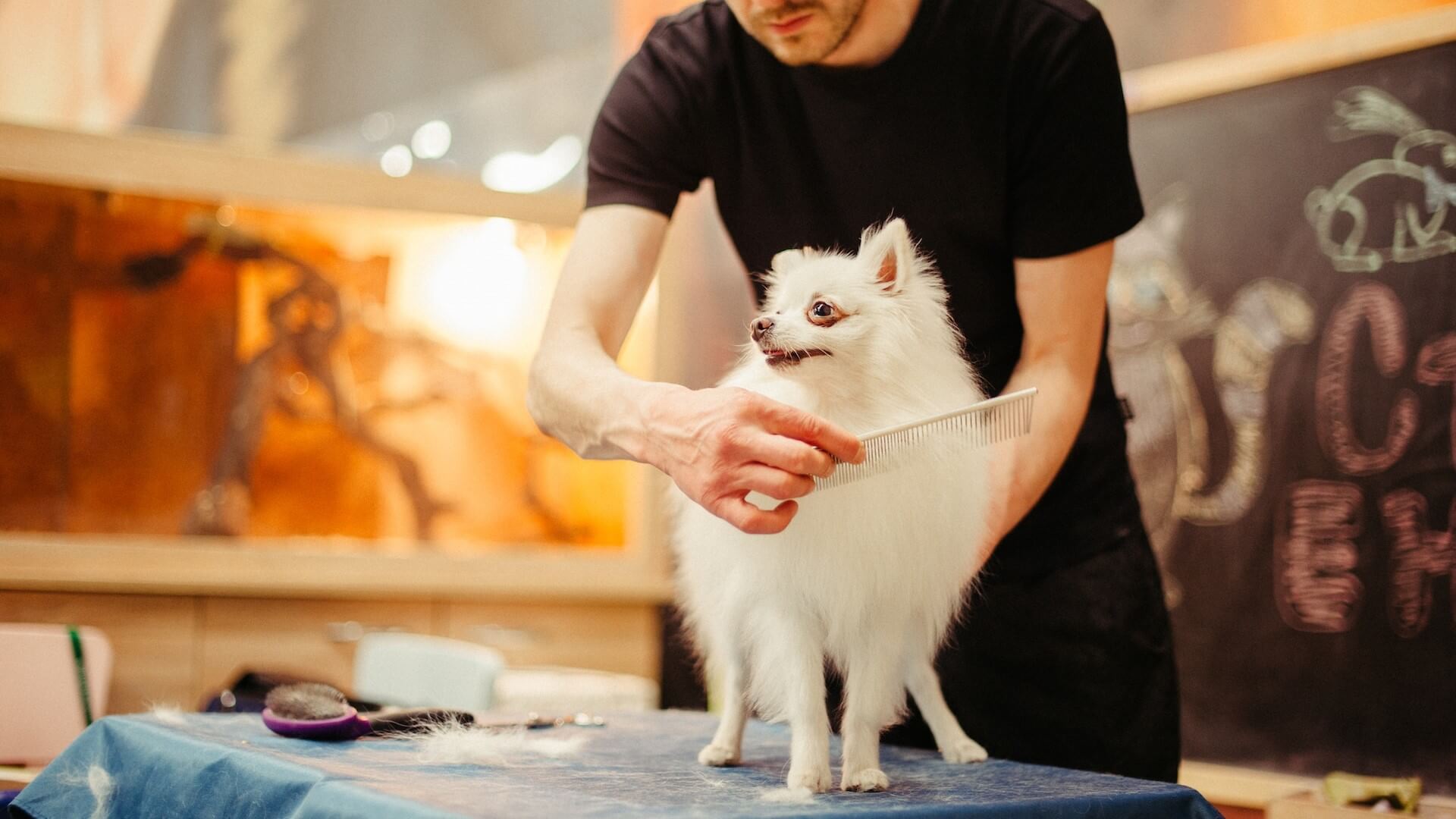
Creating a safe and comfortable space for grooming is vital for both you and your pet. Here’s what you need to consider:
- Creating a Safe Space
Ensure the grooming area is free of hazards, such as sharp objects, and that your pet can’t escape. Keep all grooming supplies within arm’s reach and out of your pet’s reach to prevent accidents. - Grooming Table or Surface
Elevating your pet to a grooming table or surface makes the process more manageable and reduces strain on your back. Non-slip surfaces are essential for their safety. Look for tables with adjustable heights for added convenience. - Proper Lighting and Ventilation
Adequate lighting is crucial for spotting hidden mats or tangles. Proper ventilation keeps the area comfortable and free of odors. Natural light or bright, adjustable LED lights are ideal for grooming areas. Ensure good air circulation to prevent overheating during longer grooming sessions. - Organizing Grooming Supplies
Invest in storage solutions like shelves, drawers, or bins to keep your grooming tools organized and easily accessible. Label containers to quickly locate specific items, and periodically check for any expired or damaged products.
An organized and well-designed grooming area ensures a stress-free experience for your pet and makes the grooming process more efficient.
The Grooming Process
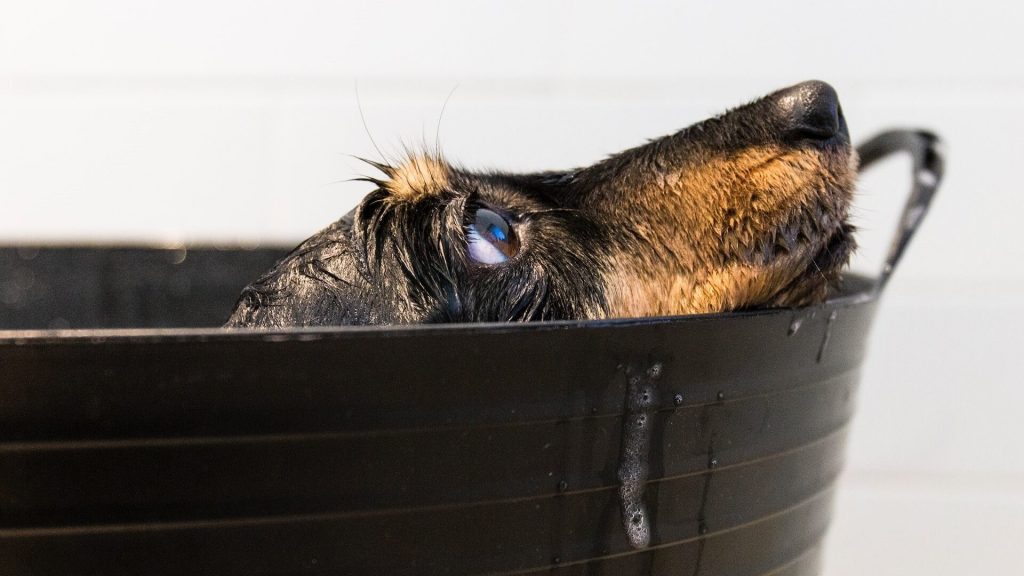
Now, let’s get hands-on with the grooming process itself. This section covers:
- Brushing Your Pet’s Coat
Brushing should be a regular practice to prevent matting and distribute natural oils. Long-haired breeds may require daily brushing, while short-haired pets can benefit from weekly sessions. Choose the right brush for your pet’s coat type and ensure it’s clean and free of debris to avoid skin irritation. - Bathing Your Pet
Choose a suitable pet shampoo and follow the recommended frequency for baths. Ensure the water is comfortably warm, and thoroughly rinse to avoid skin irritation. Use a non-slip mat or towel in the bathtub to keep your pet steady. - Trimming and Clipping
Use clippers and trimmers to maintain your pet’s fur length as needed. Pay attention to sensitive areas like the face, paws, and tail. Always trim in the direction of hair growth, and hold the skin taut to avoid accidental nicks. - Nail Care
Trim your pet’s nails regularly, but be cautious not to cut too close to the quick. Use a grinder for smooth edges. If you’re unsure about nail trimming, consult a professional groomer or your veterinarian for guidance. - Ear Cleaning
Gently clean your pet’s ears with specialized products, taking care not to push debris further into the ear canal. If your pet has excessive earwax or discomfort, consult your veterinarian for a thorough ear examination. - Dental Care
Brush your pet’s teeth regularly using toothbrushes and toothpaste designed for pets. Dental chews and toys can complement your efforts to maintain oral hygiene. If you notice signs of dental issues, such as bad breath or tooth discoloration, consult your veterinarian for a dental check-up. - Dealing with Mats and Tangles
Mats and tangles can be painful for your pet. Use detangling sprays and patience to gently work them out with a brush or comb. Start at the tips of the hair and gradually work your way up to the skin to avoid pulling and discomfort.
Each section provides step-by-step guidance on how to perform these tasks safely and effectively. Remember, positive reinforcement and gentle handling are essential for a stress-free grooming experience.
Special Considerations
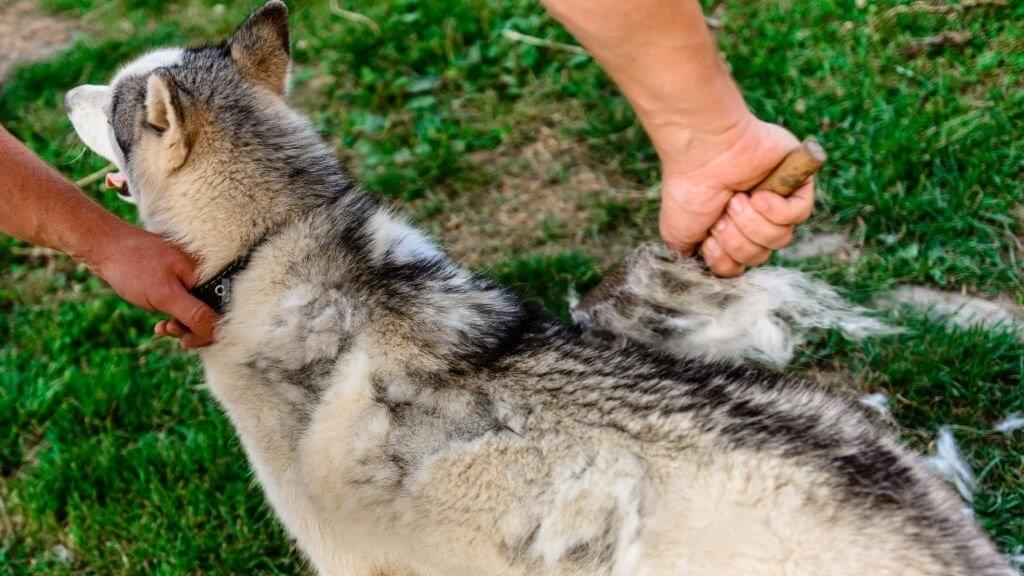
Different pets have unique grooming needs. Here, we’ll address:
- Grooming Different Breeds
Research your pet’s breed-specific grooming requirements. For example, poodles may need regular haircuts, while shorthaired breeds may require less frequent grooming. Understanding your pet’s breed characteristics will help you tailor your grooming routine accordingly. - Grooming Cats vs. Dogs
Cats and dogs have different temperaments and grooming needs. Cats often require a more delicate touch and may benefit from self-grooming brushes or mats. Dogs, on the other hand, may need more frequent grooming, depending on their breed and coat type. - Handling Shedding
Some breeds shed more than others, and managing shedding can be a significant part of grooming. Invest in a shedding tool or deshedding shampoo to reduce the amount of loose fur. Regular brushing can also help minimize shedding by removing loose hair before it falls out. - Dealing with Allergies
If your pet has allergies, grooming can play a crucial role in alleviating their symptoms. Consult with your veterinarian to choose hypoallergenic grooming products to minimize skin irritation. Additionally, consider air purifiers and allergen-reducing strategies in your home to provide a more comfortable environment for your allergic pet.
Understanding these nuances is key to tailoring your grooming routine to your pet’s specific requirements.
Tips for a Stress-Free Grooming Experience
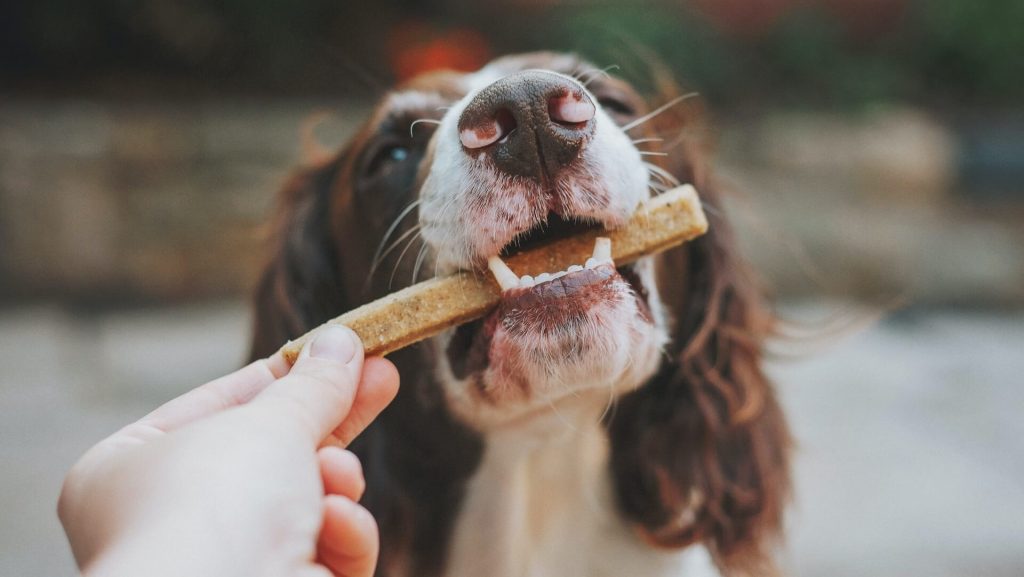
Grooming can be an enjoyable bonding experience when done right. This section offers insights into:
- Building Trust with Your Pet
Gradually introduce your pet to grooming tools, offering treats and positive reinforcement to build trust. Start with short sessions and gradually increase the duration as your pet becomes more comfortable. Always associate grooming with positive experiences. - Positive Reinforcement
Reward your pet with treats and praise during and after grooming sessions to associate them with positive experiences. Verbal cues such as “good job” or “well done” can also help reinforce good behavior. - Taking Breaks
If your pet becomes anxious or restless, take breaks to reduce stress and ensure they remain calm. Use this time to offer water and treats, play with them, or simply allow them to relax before continuing the grooming session. - Seeking Professional Grooming Help
If grooming at home becomes too challenging or if you have specific grooming needs that require professional expertise (such as complex haircuts or breed-specific styles), consider professional grooming services. Professional groomers have the experience and equipment to ensure your pet’s grooming experience is safe and comfortable.
These tips help create a positive atmosphere during grooming, reducing stress for both you and your pet. Remember that patience, consistency, and a calm demeanor are your best allies in achieving a stress-free grooming routine.
Maintaining a Grooming Schedule

Consistency is key to pet grooming success. We’ll discuss:
- How Often to Groom Your Pet
Refer to breed-specific recommendations and adapt to your pet’s needs. Some require grooming every few weeks, while others may need monthly sessions. Understanding your pet’s specific requirements will help you create a grooming schedule that keeps their coat and skin healthy. - Creating a Grooming Calendar
Keep track of grooming appointments on a calendar to ensure you stay on schedule. Note the type of grooming tasks needed for each session. This calendar will serve as a valuable reference to help you maintain your pet’s appearance and hygiene consistently. - Tracking Your Pet’s Grooming Needs
Pay attention to changes in your pet’s coat, skin, or behavior that may require adjustments to your grooming routine. For example, if you notice excessive shedding or skin irritation, consult your veterinarian to address potential underlying issues.
Establishing a routine ensures that your pet’s appearance and health are consistently well-maintained. It also allows you to promptly identify and address any grooming-related concerns that may arise.
Keeping Your Pet Fresh Between Grooming Sessions
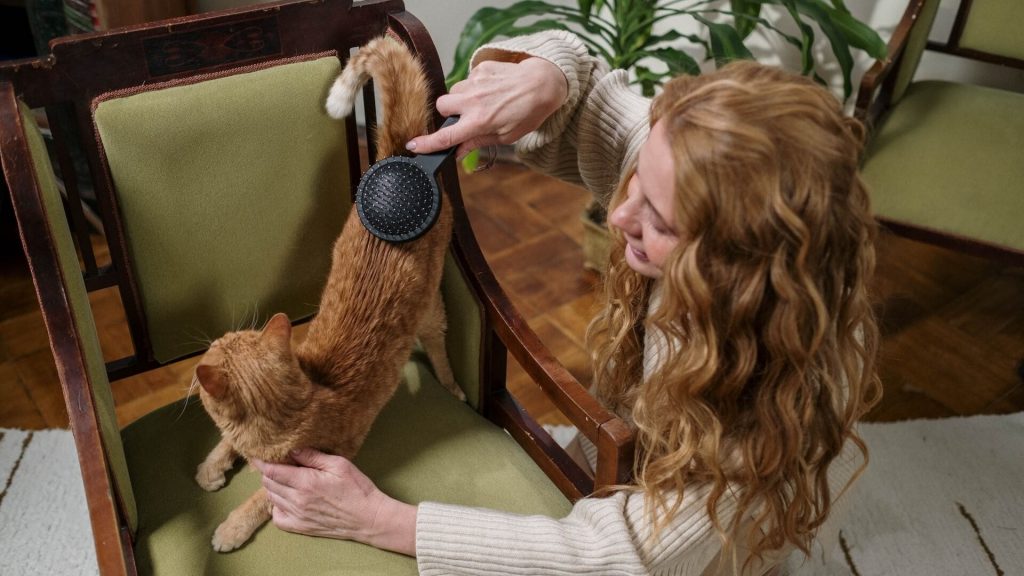
In this section, we’ll explore ways to keep your pet looking and feeling fresh between grooming appointments:
- Brushing and Quick Touch-Ups
Regular brushing removes loose fur and prevents matting. Quick touch-ups can include trimming around the eyes, paws, and sanitary areas. Use the appropriate tools for touch-ups, such as rounded-tip scissors for delicate areas. - Cleaning Ears and Eyes
Use specialized wipes and solutions to keep your pet’s ears and eyes clean and free from discharge. Pay attention to any signs of irritation or infection, such as redness, swelling, or excessive discharge, and consult your veterinarian if necessary. - Dental Care at Home
Maintain oral hygiene by continuing to brush your pet’s teeth between professional cleanings. Consider dental chews, toys, or water additives as supplementary measures to promote healthy teeth and gums. - Refreshing the Coat
If your pet’s coat starts to look dull or smelly between grooming sessions, consider using waterless shampoos or grooming sprays designed for pets. These products can help freshen up the coat and remove odors without the need for a full bath.
These in-between care practices help maintain your pet’s hygiene and appearance, ensuring they stay comfortable and healthy.
Troubleshooting Common Grooming Issues
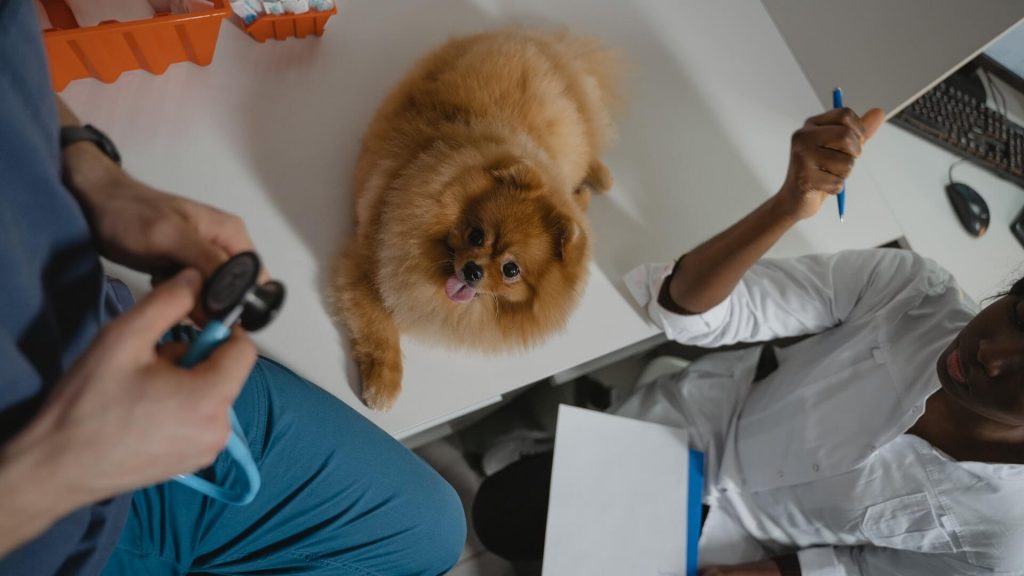
Grooming doesn’t always go smoothly. This section covers:
- Handling Resistant Pets
If your pet resists grooming, use patience, positive reinforcement, and gentle techniques to ease their anxiety. For example, desensitize them to the grooming tools by allowing them to sniff and explore them before use. Start with short sessions and gradually increase the duration as your pet becomes more comfortable. - Skin and Coat Problems
Pets can develop skin and coat issues, such as dryness, itching, or rashes. If you notice any abnormalities, consult with your veterinarian. They can diagnose and treat underlying conditions and recommend grooming products suitable for your pet’s specific needs. - Dealing with Injuries or Accidents
Accidents can happen during grooming, such as nicks from clippers or trimmers. Be prepared with a pet first-aid kit that includes items like styptic powder to stop bleeding from minor cuts. Seek immediate veterinary care for more serious injuries.
By being proactive and prepared, you can address common grooming challenges effectively and ensure a safe and comfortable grooming experience for your pet.
Conclusion
In this comprehensive guide, you’ve discovered the tools, techniques, and tips needed to ensure your fur baby stays fresh and clean. Remember, grooming is not just about aesthetics; it’s also about your pet’s health and well-being. With the knowledge and tools you’ve acquired, you can provide the best care for your four-legged companion, enhancing the bond you share.
In this journey through the world of pet grooming essentials, you’ve acquired the expertise to pamper your beloved pet with the care they deserve. They’ll thank you with endless love and loyalty, and you’ll enjoy the satisfaction of knowing that you’re providing them with a happy and healthy life.







